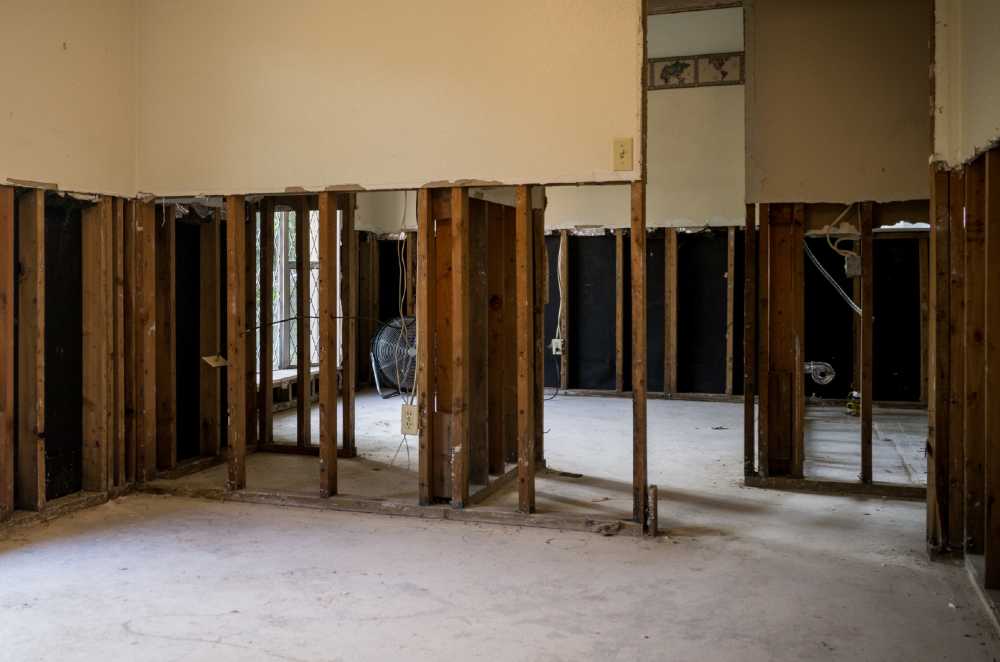Floods can cause lots of water damage to drywall. While you can dry flooded drywall in some cases, you will usually need to replace at least some of it. We explain when you need to remove drywall after a flood. Plus, we cover the best way to cut drywall after a flood.
Do You Have to Remove Drywall After a Flood?
As a general rule, you need to remove drywall after a flood. In most cases, you need to cut out flooded drywall if there are more than six inches of water or if it was wet for longer than half an hour. You should remove drywall that came into contact with sewage for anything longer than fifteen minutes.
How much water damaged drywall you need to remove after a flood depends on several factors:
- The Amount of Water – The more water you have, the more likely you will need to replace wet drywall.
- How Long It Sat – Water will continue to soak into the drywall, causing more damage as time goes on.
- If There Is Sewage – You will need to replace more drywall if there is sewage.
How Much Drywall to Remove After Flood?
You need to remove all of the soaked drywall or your walls can mold or even fall apart. You should cut the flooded drywall one foot above the waterline to ensure it is strong and stable for years to come. This also makes matching it with the new drywall easier.
Can You Dry Flooded Drywall?
You can usually dry flooded drywall if there were less than six inches of water and the wall was wet for less than thirty minutes. Flood damage can vary, so you need to check the wall to make sure it’s not too weak. However, you should never dry drywall if the flood contained sewage and was wet longer than fifteen minutes.
What Is the Best Way to Cut Drywall After a Flood?
The best way to cut drywall after a flood is with a drywall saw or a utility knife. However, you need to remove the water before you cut out the flooded drywall.
Once the water is gone, measure at least six inches and ideally one foot above the high water line. Mark the wall in several places, then use a chalk line or a pencil and a ruler so you know where to cut.
Use a drywall saw or utility knife to cut the flooded wall. Move slowly to keep the line as straight as possible. This will make it easier to hang new drywall and blend it with the existing wall.
How to Replace Drywall After a Flood
Once you’ve cut out the flooded drywall, you need to dry the wall studs. Use high-volume fans and dehumidifiers for the shortest drying time. This will also help limit damage and prevent mold.
Then measure and cut a piece of drywall to fix the wall. For the best fit, cut the replacement drywall about an eighth of an inch shorter than the gap.
Seal the seam between the pieces of drywall with a little drywall mud and drywall tape. Then blend the joint with more drywall mud, sanding in between coats for a smooth finish.
Need help getting water out after a flood? Call 1-888-443-3110 now for 24-hour service and a free quote on flood damage cleanup services.





